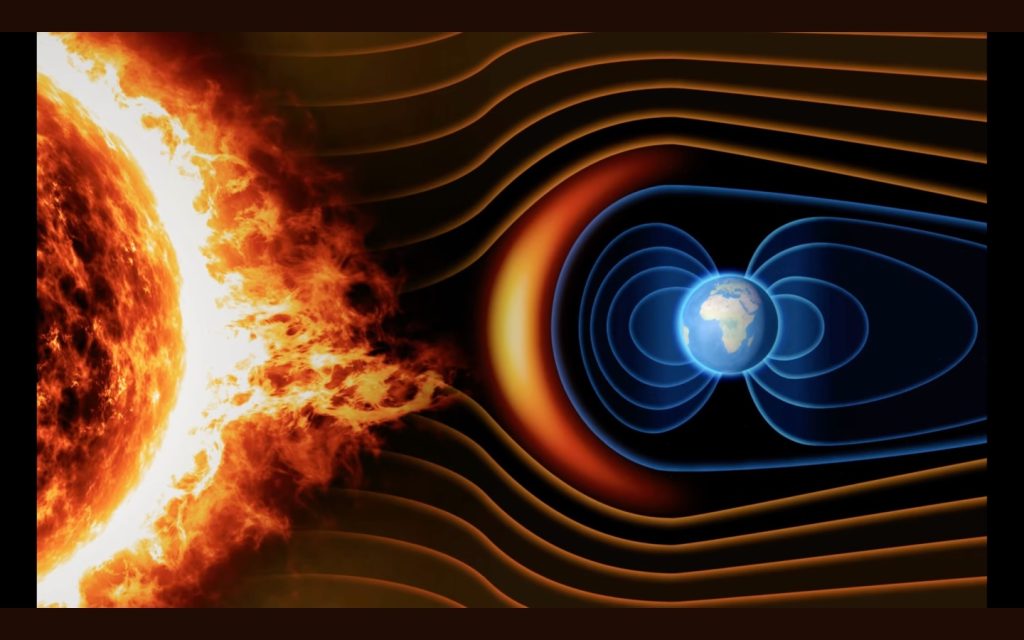Is There Really “Only One Sun”?
By Radha Mohan Das | May 26, 2024

Statements by His Divine Grace A. C. Bhaktivedanta Swami Prabhupāda such as “within this universe there is only one sun” (Śrīmad-Bhāgavatam, 5.21.11 purport) and that “the stars that twinkle in the sky also reflect the light of the sun” (Bhagavad-gītā 10.21 purport) are, of course, challenging for the scientifically-minded. After all, modern astronomers say that about 10% of all stars in the galaxy are suns (stars with planets), and they are independent sources of light. So let’s look more deeply into the definition of “sun.”
Metaphorically speaking, our sun holds a uniquely powerful influence in astrology and controls the function of sight. And from the Vedic scriptural perspective, we understand that:
- The sun is the eye of the Supreme Lord in His virāṭ-rūpa (Bhagavad-gītā 4.1)
- It holds a unique position in terms of his special relationship with Lord Viṣṇu in His personalized form as Sūrya-Nārāyaṇa. (SB 5.23.3 purport)
- Sāvita (or Sol) alone inspires all life in the universe. ( Vasyl Semenov, Lecture “Sun, Sūrya and Sūrya-Nārāyaṇa,” March 9, 2024)
- The sun is the visual focus for brāhmaṇas when chanting Gāyatrī. (Gāyatrī-vyākhyā-vivṛti by Śrīla Jīva Gosvāmī)
From the viewpoint of contemporary science, due to the enormous size of the universe, when we “see” the stars, we are “seeing” something from the past. For some stars, we see them as they were billions of years ago. So, in that sense, there is only one sun in the relative here and now.
Scientific research exploring the unique features of our sun has uncovered some interesting facts.
For instance, the mixing of dark and light photons emanating from our sun may strongly influence our assessment of distant stars, and the Kuiper belt surrounding our solar system may seriously alter the metric of light as it passes through that region.
This is echoed in Jīva Gosvāmī’s Krama-sandarbha, where he suggests that each individual brahmāṇḍa is initially covered by a layer of earth, reminiscent of the Kuiper belt. Furthermore, coronal mass ejections (highly magnetized plasma eruptions with dangerously charged particles) are common to most stars. But they influence our solar system only when coming from our sun (Sol), whose flares remain mild enough to not endanger life on earth. It’s a unique balance.

A quick survey of the famous “Goldilocks Zone,” or habitable area around a star, underscores the unique fine-tuning involved in the functioning of our solar system. Perhaps “only one sun” implies “only one solar system that can harbor advanced gross physical life forms like us.” Some examples:
- Earth: shifting the size, distance from the sun, or axial tilt by small amounts would practically end life as we know it.
- Moon: changing our nearest neighbor’s uniquely large relative size even slightly, or a minor shift in its orbital mechanics, would alter tides and moonshine intensities, producing devastating disruptions of climate conditions and ecosystems.
- Jupiter: its relatively large distance from the sun optimizes its ability to shepherd and absorb asteroids and other space flotsam harmful to the earth with its strong gravitational pull. With a mass 318 times that of earth, it has been given the nickname “the vacuum cleaner”! And Jupiter’s gravitational influence actually helps stabilize the entire system.

- Saturn: which patrols the more outer regions of the solar system, is like Jupiter’s smaller assistant.
- Uranus and Neptune: help maintain an equilibrium with the Kuiper belt.
This brief survey highlights the very special nature of our relationship with the sun, which dominates the cosmic neighborhood we call home. Although other stars in our universe may resemble some of our sun’s various features, and may emit light, further research along the lines of these preliminary conclusions could establish Sol, the center of our local solar system, as uniquely individual and thus award it the distinction of The Only Sun.
About the Author: Radha Mohan Das (Richard Cole) graduated from Manchester University in 1992, and is currently the Communications Officer at Bhaktivedanta Manor near London, where he specializes in media, public relations, interfaith, and drama. He also produces a popular YouTube channel, Vedic Science and History, and has been a BIHS team member since 2019.
Radha Mohan Das would like to thank Prishni Sutton for her help and encouragement with this article.
Opinions expressed do not necessarily reflect the opinions and beliefs of ISKCON or ISKCON News. Photo by cottonbro studio.















